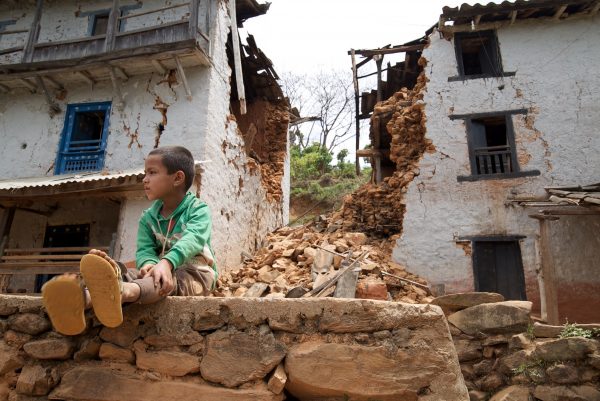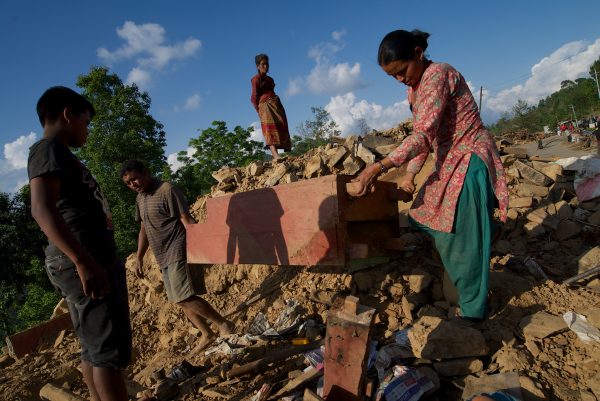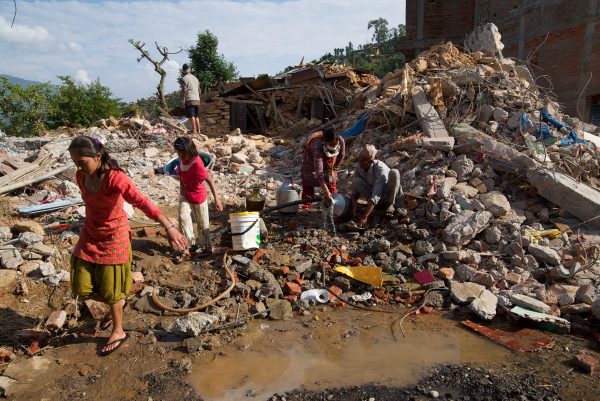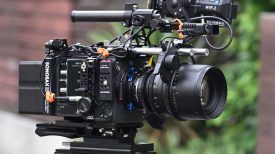Guest post by Pete Pattisson:
When a massive earthquake struck Kathmandu, where I live, on April 25, my immediate reaction was simple: get out the house now. Those of us who live here have always feared a major earthquake, and I knew straight away that this was it.
In the hours after the quake, it felt like the whole city had come out onto the streets, some for safety’s sake, and others just to see what had happened. Everyone remained tense and jittery for days, as we were hit by dozens of aftershocks, many of which registered as major earthquakes in their own right. Many thousands of people spent night after night outdoors, too afraid to sleep inside, and dozens of the city’s ancient temples, monuments and traditional buildings were destroyed.

However, Kathmandu has survived relatively unscathed; those of us who live here expected worse. Out in the rural areas, it’s a different story. Here, most people live in mud and stone houses, and village after village suffered massive damage. I visited one, just a couple of hours from Kathmandu, where every single house was severely damaged or totally destroyed. One man, who had just lost his house and his daughter, asked, in stunned grief, “What has the world come to?”
In the days after the quake, I made a number of short films for the Guardian and contributed photos, stories and reports for their live feed. I had never done live feed reporting before, but it was incredibly satisfying to email a piece and within minutes show your interviewee their quotes online, where the whole world could read them. Mobile phones really come into their own in these circumstances and, with a 3G connection (wifi was non-existent or not working), I could file reports and photos taken on the phone from most places.
How do you best make a short film for online news in a disaster zone? I wanted to try to do something different to the big broadcasters, but through lack of imagination (or just lack of time) I think I ended up producing films which were fairly traditional in terms of structure and content (in fact the only innovative footage I have seen was shot on a drone – a perfect way to show the scale of the destruction). The priority for me was just to film something, edit it and get it published quickly.

This was not easy. It took most of the day to travel outside Kathmandu, find a story, shoot it and then return, get it translated, edited and filed. In the first few days there was almost no power or internet, and in these situations power is everything; without it you simply cannot operate. One night I had to drive to seven different hotels until I found one with both. Most nights I was up to 3 or 4am.

My whole set up was incredibly light. It was just me, a small rucksack of kit, my scooter and my interpreter. I’m reluctant to talk about my kit – it seems a little indulgent when so many people have lost so much – but perhaps it will be useful for some of you. I used the Sony a7S, which I just find fantastic. It’s small and unthreatening, but very powerful. Since I wanted to take photos too, it was the ideal tool. Audio was with the Rode Videomic Pro and Sony UWP wireless mics. As far as possible I tried to use the wireless mics, but in sensitive situations, I just don’t think it’s appropriate to fiddle about fixing a wireless mic onto someone. In these cases, the Rode proved adequate. Most of the time I just used the Sony 28-70mm kit lens, which I find does a great job. I generally didn’t take a tripod with me. I think in these situations having a small, light kit makes a huge difference. You may not have the most stable shot possible, but telling an authentic story is what matters.
Within a week, the earthquake had slipped off the pages of most international media (with the exception of the Guardian and the outstanding reporting of their South Asia correspondent, Jason Burke), but the relief effort is only just beginning. How does a village where every home has been destroyed start again? How does a country with hundreds of such villages recover? It’s going to take a long time, but what’s been inspiring is the number of citizen-led relief efforts. Where the government is perceived to have been slow to act, Nepalis have mobilised huge amounts of resources to help each other. If you want to help one of these groups, I would strongly recommend the work of Teach for Nepal. You can donate to them here.
Pete Pattisson is a freelance video journalist. You can find out more about his work on his website.





